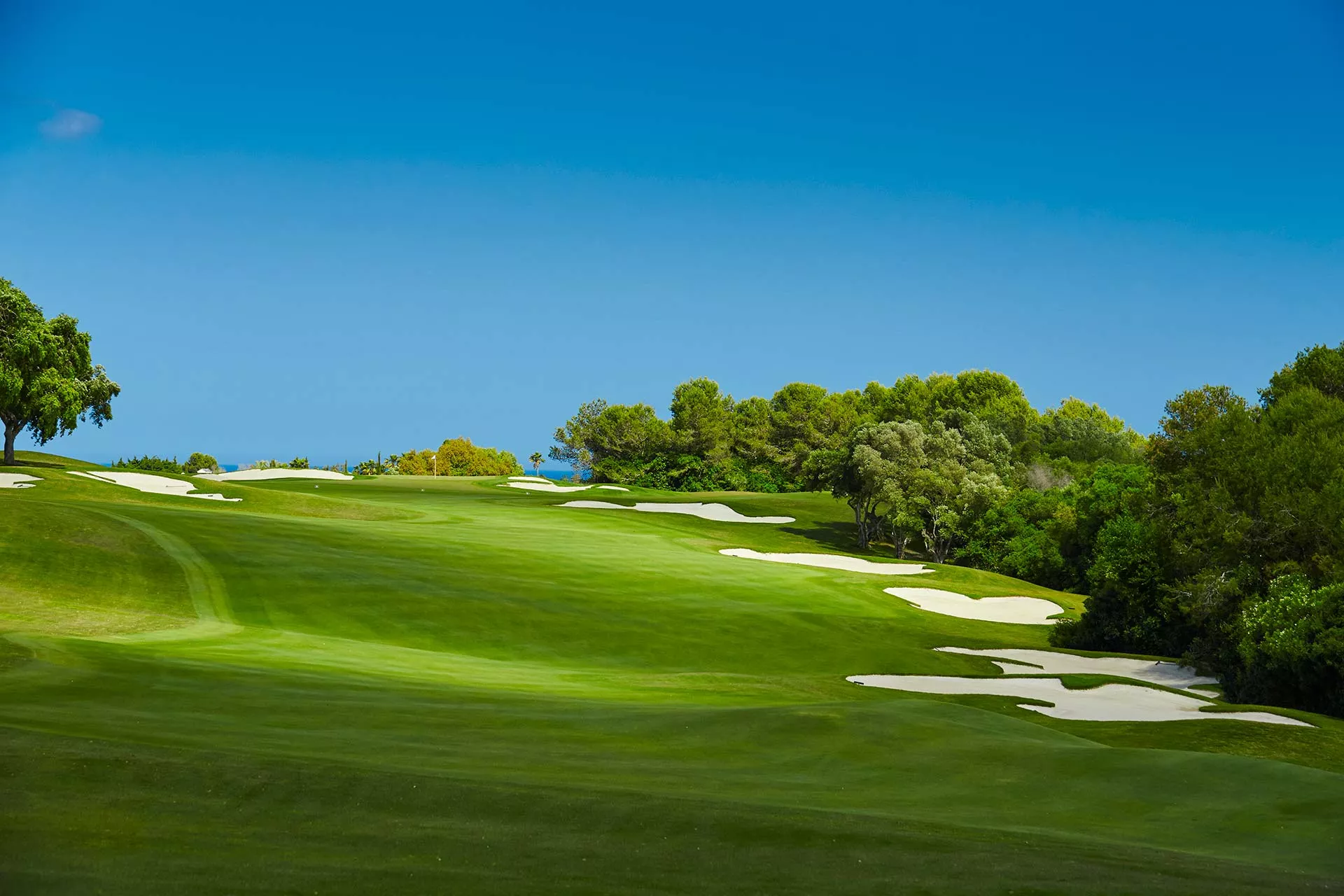A full-size golf course traditionally includes:
- 18 holes (playing areas) with a total distance of 5.5 – 6.5 km;
- driving range (Driving Range);
- short game training grounds ( Practice Green, Chipping Green, Sandtrap Area);
- “academic” (training) field for beginners, usually consisting of several holes.
- · Below is a more detailed description of all types of training fields and areas that can be constructed separately as small-form golf facilities.
Holes on the field
Each hole (playing area) of the field consists of the following sections:
- “tee” (Tee) – the starting area from which the first stroke is made on each hole. The full name is “Teeing ground”.
- “fairway” ( F airway) – a patch of grass of medium length, occupying most of the playing field between the “tee” and the “green”. If the hole is long enough and it is difficult or impossible to hit the ball on the green with one stroke from the tee, then the fairway is a kind of fairway along which it is preferable to move to the green, making subsequent strokes from the place where the ball fell, choosing the shortest and safe way.
- “Rough” (Rough) – a patch of tall and coarse grass surrounding the “fairway”. Hitting the ball in the “rough” complicates the position of the player and can significantly worsen the result of his game. From the “rough” it is advisable to knock the ball first to the “fairway” and only then continue hitting towards the “green”.
- “barriers” (Hazards) – trees, reservoirs and specially constructed sand traps – “bunkers” (bunker, the American equivalent of this term is trap), which can be located both on the “fairway” and surround the “green”;
- “Green” (Green) – the finishing section of each hole. It is usually round, oval or pear shaped and has a distinct grass cover with very short cut (3-5 mm) grass.
On the “green” is a hole in the ground with a diameter of 4.25 inches (108 mm), which is also called the “hole” ( Hole ).

In order for the location of the hole to be visible from the tee and from the fairway, a special flag is inserted into it, which is removed when hitting the ball directly on the green.
Holes (playing areas) of the field have established boundaries, and if the ball falls outside of their boundaries (out of bounds), then this ball cannot continue to play further and a new ball is introduced into the game according to special rules.
In this case, the player is penalized by adding a free kick to his total score, which reduces his chances of winning, since the goal of the game is to get the ball into the hole (hole on the “green”) in the fewest number of strokes.
Each hole in different areas has a width of 20 to 50 meters. In addition, the holes themselves must be located at a certain distance from each other, ensuring the safety of the game.
Holes are often surrounded not only by isolated trees or forest plantations, but also by vast forests.
Water features on golf courses
Not only complicate the game and decorate the course itself. Large volumes of water are vital for watering the grass. And it is not surprising that between the holes you can find not only decorative ponds and streams between them, but also natural lakes and man-made reservoirs, which significantly increase the total area of the golf course.
As a result, the area of a full-sized 18-hole golf course cannot be less than 60 hectares. In practice, taking into account the peculiarities of the terrain and the presence of water bodies, the areas of golf courses range from 60 to 100 hectares.
And for the organization of the necessary infrastructure (club building, restaurant, shop, technical support facilities, parking lots), another 2 to 4 hectares may be required.
And if a hotel or a cottage settlement is planned directly next to the golf course, plus facilities for practicing other sports, then the total area of the entire complex can increase several times.
But the playing space of the golf course itself most often occupies an area of 70 – 80 hectares, and if the average area of a typical golf course is 75 hectares, then the areas of its individual sections are usually distributed.

Small golf objects
Small-form golf objects include:
- golf courses with fewer than 18 holes;
- golf courses with shorter distances and a smaller area (Par 3, Pitch & Putt);
- driving ranges and areas for practicing various elements of golf (Driving Range,
- Practice Green, Chipping Green, Sandtrap Area).
Depending on the tasks and initial conditions (area and topography of the land plot, construction budget, etc.), small-form golf facilities can be separate independent structures, or they can be part of a small training complex in various combinations (combinations).
9 hole golf course
The holes of an 18-hole golf course are often placed to form two separate 9-hole circuits. The field is conditionally divided into the first and second “nines”. There are fields with 27 holes, i.e. three nines.
With limited areas, the golf course can only consist of 9 holes. In this case, the playing area can accommodate 30 hectares. A smaller area will also be required to organize the necessary infrastructure, taking into account the smaller number of players capable of simultaneously playing on such a half-field.
With limited areas, the golf course can only consist of 9 holes. On such a half field, two fewer people will be able to play at the same time, which means that a smaller area will be required to organize the necessary infrastructure. In this case, the golf course can cover 30 hectares.
